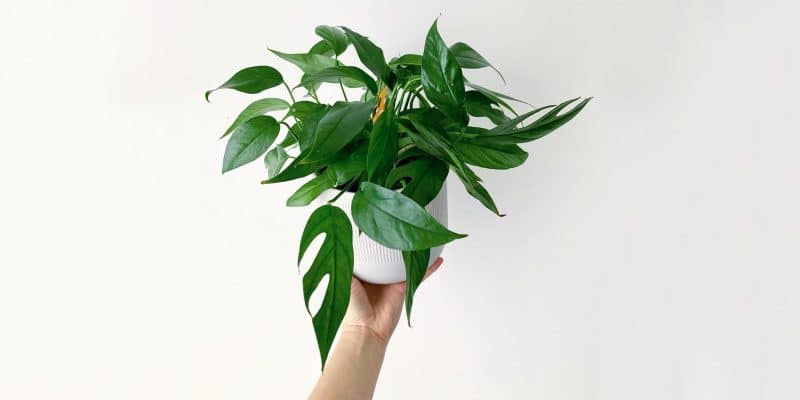Meet the Baltic Blue Pothos, the blue-green houseplant that first came on the market in the first half of 2022.
You might be thinking, “A blue houseplant? Now that’s a rare gem!” And you’d be right—this striking plant is gorgeous and easy maintenance. Plus, it displays early fenestration along with that totally unique color.
We’ll tell you everything you need to know about Baltic Blue Pothos care, from its ideal environment to treating common issues that might crop up. This blue-hued beauty is easy to care for and so worth it!
Table of Contents
Baltic Blue Pothos Plant Care Guide
History, Habitat, and Characteristics
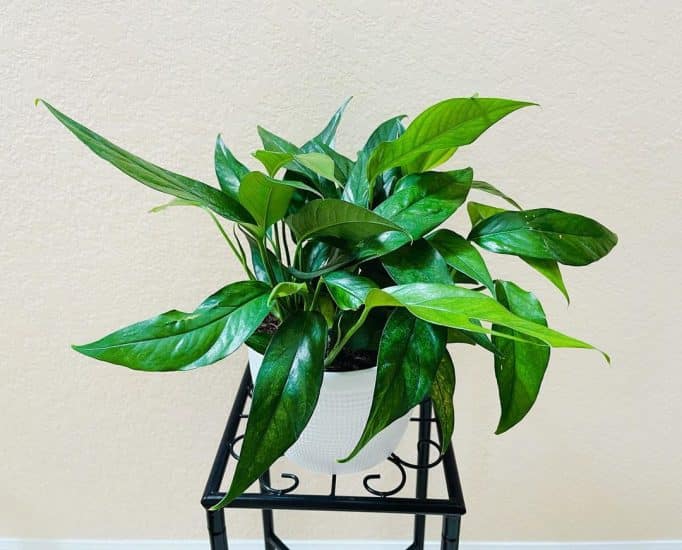
Baltic Blue Pothos (Epipremnum pinnatum ‘Baltic Blue’) was first introduced as a cultivar by Costa Farms in early 2022 after a member of their team discovered it in Southeast Asia.
Baltic Blue Pothos leaves develop stunning, split patterns as they grow, reminiscent of the striking fenestration found in philodendrons or monsteras.
And guess what? Young plants already display dragon tail-like fenestrations, so you don’t have to wait too long to see them!
But it’s not just about those eye-catching leaf patterns. The leaves themselves have a mesmerizing bluish tint, which becomes even more prominent as the Baltic Blue Pothos grows. The plant’s genetics, light exposure, and fertilization all play a part in creating your plant’s unique shade.
Baltic Blue plants are closely related to other pothos varieties (I’m looking at you, Cebu Blue Pothos). It’s an epiphyte and will benefit from being given a structure, like a moss pole, to climb upward, which will encourage mature leaves with signature splits as the plant matures.
Although, as with many other pothos plants, you can also let its stems grow horizontally if you want to create a cool effect along a desk or bookshelf.
Light
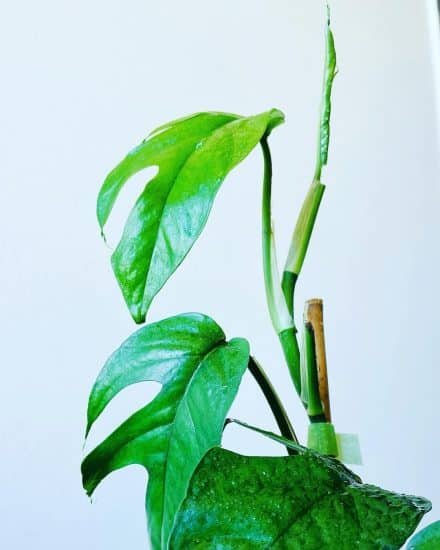
As a tropical plant, the Baltic Blue Pothos is versatile enough to withstand low light all the way to medium or bright light.
To bring out the stunning deep blue green leaves, put your plant in lower light conditions. However, be cautious with direct midday sun exposure, since it can cause leaf scorch.
To protect your Baltic Blue Pothos plant from harsh direct light, position it a few feet away from a south-facing window. This way, you’ll provide just the right amount of bright indirect light without putting it at risk of damage.
If your Baltic Blue Pothos plant shows slow growth, leggy growth, or smaller, paler leaves, this might be a sign of not enough light. If this happens, try moving the plant to a brighter spot.
On the other hand, if it’s getting too much light, you may see leaves becoming faded, bleached, or developing scorched patches. In this case, it’s best to move your Baltic Blue away from strong light sources.
Water
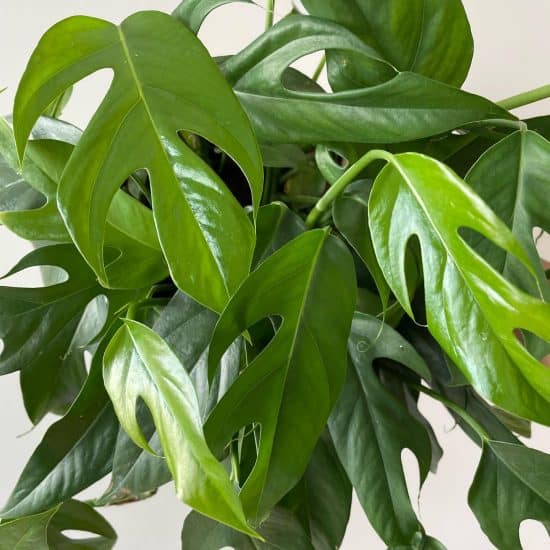
In spring and summer, the active growing season, let your Baltic Blue pothos’ soil dry out about 25% between waterings before giving it a good soak. When fall and winter roll around, let it dry out up to 50% between waterings.
When your Baltic Blue Pothos isn’t getting enough water, it might start wilting or drooping. You might also see the oldest leaves, usually at the bottom, turn yellow, or leaves all over the plant curl up.
If you notice these signs, water more often. And don’t forget to remove any dying leaves to keep pests away!
Overwatering can lead to symptoms like yellow leaves all over the plant, mushy stems, and soggy soil conditions. Brown leaf tips and small brown or black spots on the leaves can be signs of root rot, which means it’s time to cut back on watering and let the soil dry out.
Our watering tips:
- Check the soil around 1-2 inches deep to see if it’s time to water. It should be almost dry, but not completely.
- Make sure water drains properly, so the plant doesn’t sit in standing water.
- Reduce watering frequency during winter, when growth slows down.
Temperature and Humidity
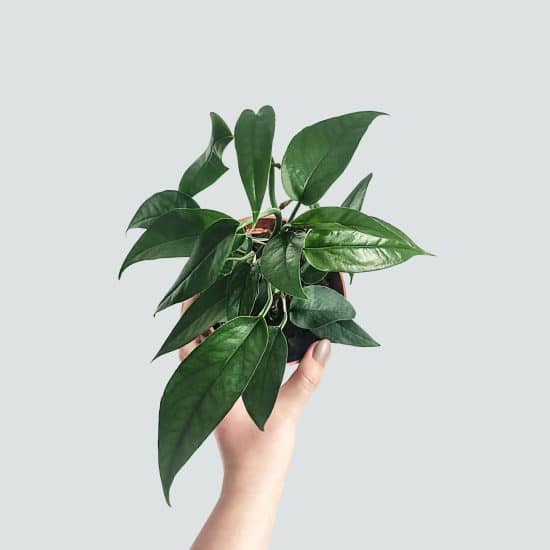
Baltic Blue Pothos enjoys a comfortable indoor temperature between 65-80°F. Keep it away from windows and drafty doorways, since it doesn’t like sudden temperature changes.
If the temperature gets too low, you may notice signs like drooping or wilting leaves. On the other hand, if the temperature gets too high, you may find the plant’s growth slowing down or its leaves turning yellow.
Baltic Blue Pothos can tolerate a wide range of humidity levels, but these plants prefer higher humidity, around 60-70%.
To identify if your pothos is getting too much or too little humidity, look for signs like yellowing leaves or slow growth. If it’s still growing but having trouble unfurling leaves, it could be due to too little humidity.
Increase indoor humidity by placing a tray of water and pebbles beneath the plant or using a humidifier.
Soil and Planting
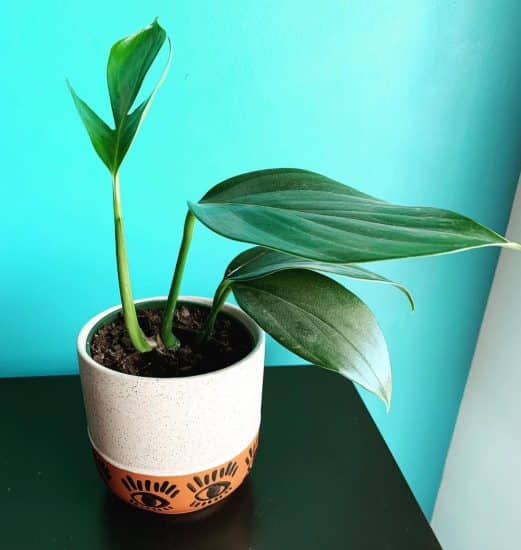
The Baltic Blue Pothos, also known as Epipremnum pinnatum ‘Baltic Blue,’ thrives in a well-draining soil mix.
Our recommended soil mix:
- 1 part plant soil
- 1 part cactus soil or coco coir (ensures good drainage while making sure the plant can still get nutrients)
Soil moisture is crucial; a moisture meter can help you determine the right balance between keeping the soil moist without leaving it soaking wet.
Signs of poor soil include yellowing leaves, wilting, or stunted growth, which can lead to leaf drop if not addressed.
Fertilizer
Fertilizing your Baltic Blue Pothos also plays a crucial role in developing its characteristic green-blue color. Use a general houseplant fertilizer, such as liquid, soluble, or granule fertilizer, once a month or so during the growing season and follow the instructions on the packaging.
Be cautious of over-fertilizing, since this may cause burning, brown leaf tips, or excessive weak growth. If you notice these symptoms, reduce the amount of fertilizer or how often you apply it, and flush the soil with water to remove excess fertilizer salts.
Repot your Baltic Blue Pothos once a year, or when you notice roots poking out of the pot’s drainage holes. When repotting, choose a container only slightly larger than the previous one. Make sure it has enough drainage holes to prevent overwatering or issues with the plant’s roots.
Propagation Guide
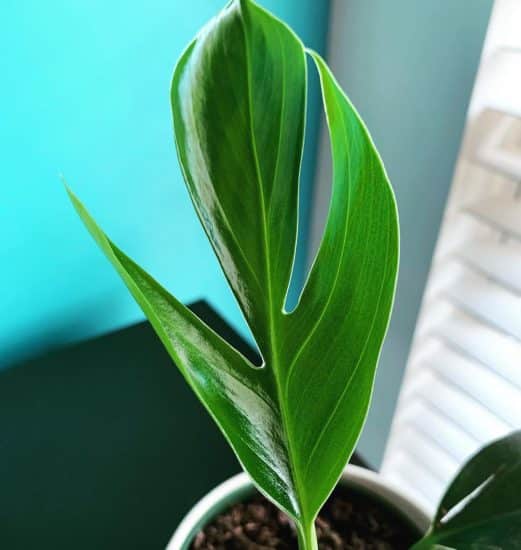
The easiest way to propagate Baltic Blue Pothos is by stem cutting. And when we say easy, we mean easy.
Propagating Baltic Blue Pothos by stem cutting:
- Hunt for the perfect stem: First things first, scope out a healthy stem on your Baltic Blue Pothos that has at least 3-4 leaves. Make sure it’s free from any troubles like diseases or spider mites before you chop-chop.
- Snip, snip: Grab some clean, sterilized scissors or pruning shears and cut that stem just below a leaf node. Aim for a cutting around 4-6 inches long, with a leaf node right at the bottom.
- Get your cutting prepped: Gently remove the lowest leaf from the cutting to show off that node. This is where the magic happens, and new roots will sprout.
- Set up a cozy home: Fill a small container with some water, preferably filtered or rainwater to make your cutting extra happy. Ensure the container is deep enough so the cutting fits in comfortably without its plant’s leaves taking a swim.
- In goes the cutting: Submerge your cutting’s now-naked node into the water, being careful not to let any leaves join the party. Place the container somewhere with bright light but indirect sunlight to catch some rays.
- Keep an eye on your new buddy: Change the water every 2-3 days to keep things fresh and clean. If you spot any signs of excess water, don’t hesitate to give your Blue Pothos cutting a little trim.
- Watch for roots: In a few weeks, you’ll see tiny root growth from the submerged node (how exciting!). Once they reach about 2 inches long, your rooted cutting is ready to move on up in the world.
- Time to settle down: Find a pot with good drainage and fill it with a well-draining potting mix, such as an orchid bark mix or cactus mix. Plant your cutting with its new roots just below the soil’s surface, making sure not to bury any leaves – they need to breathe too!
- Care and nurture: Give your new baby Baltic Blue Pothos a good drink and stick to a regular watering schedule. Keep it in a spot with bright, indirect sunlight, and be patient as your new growth appears, strong and healthy.
If you’re dreaming of a fuller and bushier growth after you propagate Baltic Blue Pothos, plant 10 to 12 stem cuttings in a larger pot or hanging basket for a jaw-droppingly beautiful display.
Common Issues
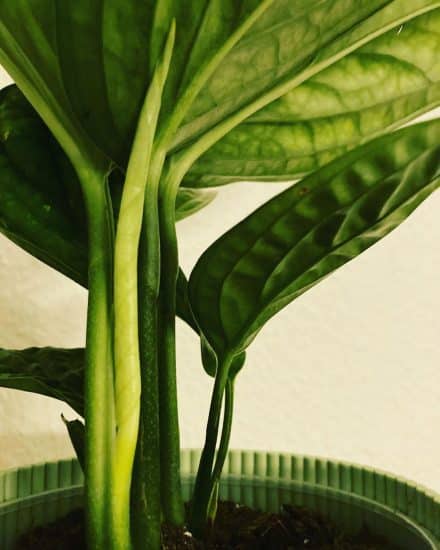
New Leaves Damaged
Sometimes Baltic Blue Pothos plants have new growth that gets damaged while it’s unfurling (like any pothos plant). This might be due to lack of humidity.
To spot this issue, you’ll want to look for leaves that appear a little torn, scrunched up, or just different from the older, healthier Baltic Blue Pothos leaves.
To help your Baltic Blue plant bounce back, make sure it’s hanging out in a space with consistent humidity levels (like a well-ventilated room, but away from direct drafts or air vents). You could also try placing a tray of water beneath it or getting a humidifier to give it that extra boost of moisture.
Oh, and don’t forget to water it properly and keep it away from extreme temperature changes—that’ll help keep those new leaves safe too.
Leaf Burn
Your Baltic Blue Pothos could experience some leaf scorch or burn if it ends up too close to a hot, south-facing window. To spot this issue, keep an eye out for leaves with brown patches, edges that are curling up, and surfaces that feel dry or crispy.
To save your pothos from sunburn, move it to a spot that gets bright but indirect light instead of direct summer sun. If you see signs of leaf burn already, just trim away those damaged leaves and relocate your pothos to a spot with less direct sun.
Remember to keep an eye on it and adjust its position if you spot any more signs of leaf burn. Your pothos will thank you for it!
Pests and Diseases
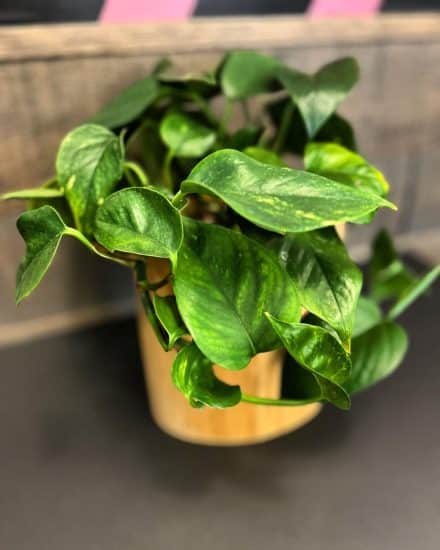
Mealybugs
If you spot white cottony masses on your pothos plants’ leaves and stems, those are mealybugs. If left untreated, they can cause your Baltic Blue plant’s leaves to fall off . . . not fun!
To get rid of mealybugs, grab a cotton swab and dip it in rubbing alcohol, then gently wipe away the pesky bugs. If they’re really being stubborn, mix a few drops of dish soap with water and give your plant a good spritz (just remember to rinse off any soapy residue with water afterwards).
To prevent future mealybug invasions, always keep an eye out for signs of their presence on your pothos varieties. When you bring a new plant home, keep it separate from your other different plants for a little while.
Root Rot
If you notice your Baltic Pothos roots becoming mushy, dark, and slimy, or if the leaves are wilting and developing brown spots, root rot might be the culprit.
To fix this, first, carefully remove your plant from its pot and gently wash the soil from the roots. With sterilized scissors (cleanliness is key!), snip off any rotten roots.
Next, give your pothos a fresh start in a well-draining soil mixture with perlite, pumice, or LECA, and choose a pot with a good amount of drainage holes to avoid water buildup.
To keep roots from rotting in the future, be mindful of your watering habits. Wait until the top two inches of soil are completely dry before giving your pothos a drink, and remember – overwatering is a no-no.
Conclusion
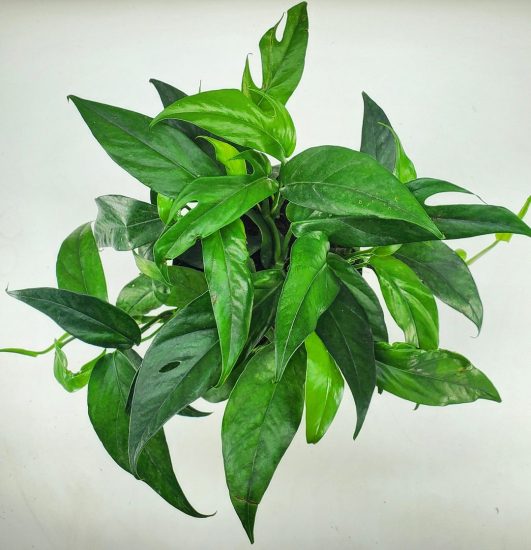
That’s a wrap for our Baltic Blue Pothos care guide!
The Baltic Blue Pothos is a perfect beginner-friendly plant that can handle low, medium, or even bright indirect light conditions. It’ll thrive in your home or office, adding beauty and charm without demanding too much attention.
If you found our guide helpful, please share it with your fellow plant loving buddies. And, as always, reach out if you have any questions or concerns about your beautiful Baltic Blue Pothos or any other houseplant.
Take care, and happy gardening!
FAQ
What’s the difference between Cebu Blue Pothos and Baltic Blue Pothos?

While the two are both Epipremnum pinnatum cultivars, Baltic Blue Pothos has darker leaves, while Cebu Blue Pothos sports leaves with more of a bluish silver shade. You can also tell them apart by how quickly the Baltic Blue plant develops fenestrations, or splits, in its leaves — spoiler alert: it’s much faster than the Cebu Blue Pothos does!
Is a Baltic Blue Pothos rare?
Baltic Blue Pothos is a new variety of Epipremnum pinnatum that was first discovered in a Southeast Asia and then put on the mass market as a cultivar by Costa Farms in 2022. It’s not as common as, say, golden pothos, but it isn’t rare these days, either.
Do Baltic Blue Pothos grow fast?
It’s a fairly fast grower, getting up to six feet long in three years, but don’t worry — you shouldn’t have to repot it more than twice a year.
Is Baltic Blue Pothos a climbing plant?
This plant can definitely climb — just be sure to give it a moss pole or other support to help it along the way.

